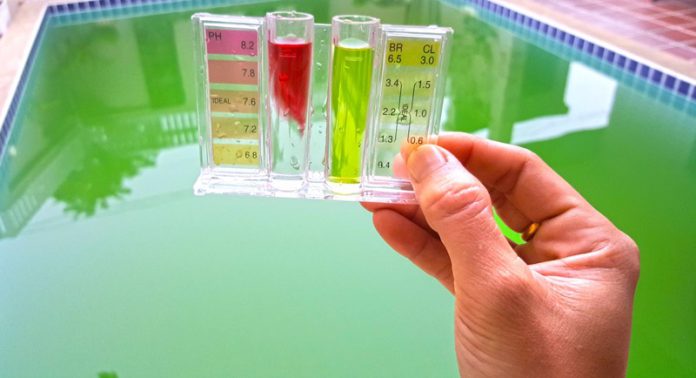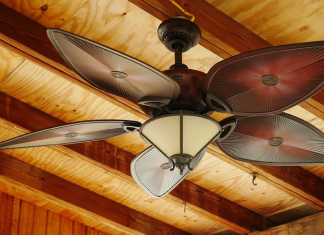During summertime, swimming pool owners, including those who own saltwater pools, might face the problem of green pool water. Sun’s out, guns out, and a refreshing dip in the pool awaits you! But you walk out to your deck only to see green pool water. Yuck! You might be thinking: “Why is my pool water green? How do you fix a green pool fast?”
If you notice that your pool water has turned green, you may wonder what caused it and how to fix it quickly. Unfortunately, several factors can contribute to pool water turning green, such as yellow or black algae, low chlorine, or high pH levels. However, there are effective ways to treat green pool water and prevent it from reoccurring. Here we’ll explore what causes green pool water and how to get rid of it.
Sometimes, it’s a good idea to seek advice from experts in pool maintenance, as they can be helpful in this regard.
Why Is My Pool Water Green?
Green pool water can really ruin your mood and even your entire day if you set aside time for a swim! The darker the pool water’s color, the more severe the issue. Here are the main causes of green pool water:
Algae Bloom
Sometimes on really hot days, pools are susceptible to algae. Once algae starts growing in your pool, it spreads like wildfire. Yellow algae is the most common culprit of green pool water and comes about when your chlorine levels are off. When your chlorine levels are too low, it lets algae grow and rapidly multiply.
Low Chlorine Levels
Algae bloom usually comes about in a pool when the free available chlorine levels are low. When you notice green pool water, it usually means you need to boost your chlorine levels immediately. But why are the chlorine levels too low? You might have had lots of swimmers, you might have had rain, but the basic answer is: not enough chlorine has been added to the pool! Even if you have been adding chlorine, if chlorine levels are being depleted faster than they are being replenished, your free available chlorine levels will drop low enough to be a problem.
High Phosphate Levels
Phosphate is a mineral that algae feed on to survive. If phosphate makes its way into your pool, algae will continue to thrive faster and faster, causing your pool to require more and more chlorine, and then when the problem gets bad enough, causing the pool to become even greener. The thing is, most people don’t test phosphate levels in pools or have a phosphate remover handy, making it easy for an algae problem to quickly spring up on you. Regularly test your pool for phosphates and make sure the water has 100 parts per billion (ppb) or less.
High pH Levels
A healthy pool has a 7.4-7.6 pH level. Any higher than that, especially any higher than 8.1, your pool’s chlorine will be useless. With inactive chlorine, yellow algae will continue to grow uninhibited, causing green pool water.
Insufficient Filtration
It’s easy to forget to check your pool filter sometimes – we’re all guilty of that once in a while. But insufficient filtration is a sure way to get green pool water. If you don’t run your pool circulation system enough to filter all the water in the pool 1-2 times a day, and if you don’t regularly check and clean out your filter, you’re going to be at risk of green pool water.
High CYA Levels
CYA, or cyanuric acid, is a product that protects chlorine from degradation. If you have too low of a level, sunlight can quickly deplete the chlorine level. However, if you have too much CYA, your chlorine will become inactive. CYA levels should be around 30-50 parts per million.
Now that we know the causes, we can move on to fix green pool water. But how do you fix a green pool fast?
How to Get Rid of Green Pool Water
So you’ve determined the cause of your green pool water (or at least one of them): algae is the culprit. You might be thinking: “how do I get rid of algae in my pool fast?” Follow the instructions and maintenance tips below to treat green pool water for good!
Shock the Pool
You need to super-chlorinate the water, adding high amounts of chlorine so that there is enough to kill off those microorganisms that are growing. A pool shock treatment is a great way to treat green pool water. The shock treatment infuses your entire pool with a surplus of chlorine. This shock treatment will kill all sorts of algae, including yellow and black algae, as well as other harmful bacteria.
What to Do if the Pool Is Still Green After Shocking?
If the shock treatment doesn’t work, don’t worry. There are a few extra steps you can take to combat green pool water. Try these helpful tips:
Use an Algaecide
Adding algaecide is another highly effective way to kill algae. Chlorine works by “oxidizing” the algae, but a copper-based algaecide essentially works by starving the algae so they die off.
Run the Filter More Often
After shocking your pool, you want to focus on removing all of the algae you’re killing. Run your circulation system as much as possible to help filter out all of the dead algae, and then be sure to thoroughly clean out your pool filter. To help prevent algae going forward, make sure you are running your circulation system enough so that all of the water in your pool is being moved through the filter 1-2 times a day (“pool turnovers”). This will ensure every bit of your pool is filtered, and reduce your risk of cloudy pool water and green pool water. If you are having pool filter problems (dirt and debris making it back to the pool, leaking, etc.), have a pool professional assess your filter — they might be able to recommend a better type of filter.
Use a Phosphate Remover
High phosphate levels (often from run-off fertilizer) can allow algae to multiply fast enough that your typical chlorination is not nearly enough. Buy a test kit to measure your phosphate levels and ensure the level isn’t over 100 parts per billion. If your phosphate levels exceed that threshold, use a phosphate remover.
Keep Up With Regular Cleaning
Remember to regularly skim debris off the surface of your pool and clean along your pool walls as well. It is vital to remove all organic debris from the pool (like dead leaves), as this decomposes to become food for algae. Make sure you remove any debris that might be blocking your pool filtration system as well. Maintaining a regular pool cleaning schedule is a good way to prevent green pool water.
If You Aren’t Already…Consider a Saltwater Pool!
Saltwater pools can provide much more consistent chlorination, so algae never gets a foothold and never gets a chance to become an algae bloom. Saltwater pools are also much easier to maintain than traditional, chlorinated pools. That is because you don’t have to regularly buy and add chlorine, the “salt chlorine generator” does that for you automatically every day. Consistent chlorination means a reduced chance for green pool water!
Saltwater pools have countless benefits apart from easy maintenance as well. The lifetime cost savings of a salt chlorinator system is estimated by many in the industry as up to 50% savings over conventional chlorination. A natural exfoliator, the salt in saltwater pools helps moisturize your skin. It’s also less harsh on your skin and hair since it helps eliminate harsh chlorine













